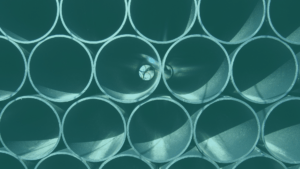¿WHAT IS INDUSTRIAL ANALYTICS?
To level the reading experience for all our readers, three concepts that seem to be the same will be separated. SICEX site helps to define the difference between Data Science, Artificial Intelligence and Data Analytics.
- Data Science is in charge of understanding and studying information.
- Artificial Intelligence is the tool designed to mimic human behavior in terms of intelligence.
- Data Analytics is in charge of organizing a company’s information in order to recognize its effective applications.

Tecnoap, based on its vast experience in providing technology for the manufacturing world, named its AI business unit for manufacturing as Industrial Analytics.
Industrial Analytics is the area of Tecnoap in charge of organizing the information generated through Data Science models developed using AI tools for the improvement of product manufacturing processes in the industrial manufacturing environment.
The integration of Data Science by applying advanced processing to the data collected by the industry through its four disciplines, provides the company with a wealth of benefits. It enables businesses to obtain valuable information about their production processes and make decisions effectively and efficiently. With this, the company’s performance, productivity and profitability can be significantly improved. For example, using data analysis techniques, a company can predict bottlenecks in its production line and take preventive measures to prevent them from happening. Similarly, with these techniques, a company can predict future market behavior and adjust its production, supply and marketing strategies accordingly.
WHICH ARE THE FOUR DISCIPLINES OF DATA SCIENCE?
Data science has become a fundamental tool for decision making. As this discipline has evolved, four key areas in its development have been identified.
Descriptive analytics
Descriptive analytics is the discipline that allows obtaining knowledge of the area or process being analyzed through the visualization of its data. In this phase, a historical summary is created to provide relevant information. The data is also prepared for analysis. Graphs and tables are created to illustrate trends, patterns and exceptions in the data. These are then visualized in reports, variables, comparisons, etc. This allows users not only to learn, but also to quickly identify problems and opportunities.
Diagnostic analytics
This discipline compares historical data with other data to identify why something happened. It provides detailed information about a particular problem and can help resolve issues that cannot be resolved by simply viewing tables and reports. A company must have detailed information at its fingertips in order to make timely decisions.
Predictive analytics
Discipline of data science focused on predictive analytics. Here, machine learning techniques are used to predict the future behavior of data. It can use insights from the previously mentioned disciplines to detect clusters and exceptions. Predictive models are also created, which allow decision-makers to proactively take preventive measures to try to deal with future problems. The accuracy of this stage is highly dependent on the quality of the data.
Prescriptive analytics
The fourth and final discipline of Data Science is prescriptive analytics. Prescriptive analytics uses predictive models and defines what actions to take in order to eliminate a future problem or take advantage of a trend. It requires internal historical data and external information due to the complexity of the algorithms it uses when automating decision making. It relies on a feedback system to anticipate the connection between an action and its outcome.
As technology continues to advance and democratize by leaps and bounds, companies will generate increasing amounts of data, and those companies that start down the path of learning and improvement through the implementation of AI-based solutions will remain competitive in a dynamic market that is unforgiving of staying with the status quo.
WHICH BENEFITS DOES INDUSTRIAL ANALYTICS PROVIDE?
Industrial analytics is a powerful tool that can provide a business with a significant competitive advantage in the market. Here are some of the main benefits of integrating this discipline in your enterprise.
- Cost reduction. By identifying areas of inefficiency, industrial analytics can help to reduce production costs, which can improve an industry’s profitability.
- Improve product quality. Industrial analytics can help find hidden patterns and trends in data. These can help improve product quality. Also, companies can improve customer satisfaction and increase brand loyalty.
- Improve supply chain management. Companies can better manage their supply chain by identifying areas of inefficiency and optimizing the flow of materials and products.
- Make more informed and accurate decisions. Industrial analytics provides valuable information that can be used to make more informed and accurate decisions. In doing so, companies can reduce the risk of making poor decisions and improve overall business performance.
- Improved efficiency and productivity. Bottlenecks can be more easily identified. As well as areas of inefficiency in production processes. In doing so, steps can be taken to improve efficiency and productivity. Which in turn can increase the company’s profitability.
In summary, industrial analytics is a key tool for companies in order to improve their competitiveness in the market and achieve their business objectives more effectively.
WHAT DO WE DO AT TECNOAP?
In Tecnoap, a company with 30 years of experience in the industrial sector, we extract valuable knowledge to reach intelligent decisions. Thanks to the application of an advanced treatment to information, we turn any company into a disruptive company.
By the implementation of the four disciplines of Data Science, and the processing of data with machine learning algorithms, we obtain a great tool for:
- Discovery of hidden patterns in the process
- Anomaly detection
- Learning the organization of data-driven processes
- Maximize business profitability
- Increasing productivity on the shop floor
- Downtime reduction
- Speed analysis and decision making



